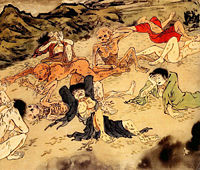Chan/Zen
From Buddha World
Zen is a school of Mahāyāna Buddhism, referred to in Chinese as Chán. Chán is itself derived from the Sanskrit Dhyāna, which means "meditation" (see etymology below). Zen emphasises dharma practice and experiential wisdom—particularly as realized in the form of meditation known as zazen—in the attainment of awakening, often simply called the path of enlightenment. As such, it de-emphasizes both theoretical knowledge and the study of religious texts in favor of direct, experiential realization through meditation and dharma practice. The establishment of Zen is traditionally credited to the South Indian Pallava prince-turned-monk Bodhidharma, who is recorded as having come to China to teach a "special transmission outside scriptures" which "did not stand upon words". The emergence of Zen as a distinct school of Buddhism was first documented in China in the 7th century CE. It is thought to have developed as an amalgam of various currents in Mahāyāna Buddhist thought—among them the Yogācāra and Madhyamaka philosophies and the Prajñāpāramitā literature—and of local traditions in China, particularly Taoism and Huáyán Buddhism. From China, Zen subsequently spread southwards to Vietnam and eastwards to Korea and Japan.
Early history
As noted above, much of Zen history is combined with mythology. The historical records required for a complete, accurate account of early Zen history no longer exist. Chan, as it is generally called when referencing Zen Buddhism in early China, developed from the interaction between Mahāyāna Buddhism and Taoism. Some scholars also argue that Chan has roots in yogic practices, specifically kammaṭṭhāna, the consideration of objects, and kasiṇa, total fixation of the mind. The entry of Buddhism into China was marked by interaction and syncretism with Taoic faiths, Taoism in particular. Buddhist scriptures were translated into Chinese with Taoist vocabulary, because it was originally seen as a kind of foreign Taoism. In the Tang period, Taoism incorporated such Buddhist elements as monasteries, vegetarianism, prohibition of alcohol, the doctrine of emptiness, and collecting scripture into tripartite organisation. During the same time, Chan Buddhism grew to become the largest sect in Chinese Buddhism. The establishment of Chan is traditionally credited to the Indian prince turned monk Bodhidharma (formerly dated ca 500 CE, but now ca early fifth century), who is recorded as having come to China to teach a "special transmission outside scriptures" which "did not stand upon words". Bodhidharma settled in the kingdom of Wei where he took among his disciples Daoyu and Huike. Early on in China Bodhidharma's teaching was referred to as the "One Vehicle sect of India". The One Vehicle (Sanskrit Ekayāna), also known as the Supreme Vehicle or the Buddha Vehicle, was taught in the Lankavatara Sutra which was closely associated with Bodhidharma. However, the label "One Vehicle sect" did not become widely used, and Bodhidharma's teaching became known as the Chan sect for its primary focus on chan training and practice. Shortly before his death, Bodhidharma appointed Huike to succeed him, making Huike the first Chinese born patriarch and the second patriarch of Chan in China. Bodhidharma is said to have passed three items to Huike as a sign of transmission of the Dharma: a robe, a bowl, and a copy of the Lankavatara Sutra. The transmission then passed to the second patriarch (Huike), the third (Sengcan), the fourth patriarch (Dao Xin) and the fifth patriarch (Hongren). The sixth and last patriarch, Huineng (638–713), was one of the giants of Chan history, and all surviving schools regard him as their ancestor. However, the dramatic story of Huineng's life tells that there was a controversy over his claim to the title of patriarch. After being chosen by Hongren, the fifth patriarch, Huineng had to flee by night to Nanhua Temple in the south to avoid the wrath of Hongren's jealous senior disciples. Later, in the middle of the 8th century, monks claiming to be among the successors to Huineng, calling themselves the Southern school, cast themselves in opposition to those claiming to succeed Hongren's then publicly recognized student Shenxiu. It is commonly held that it is at this point—the debates between these rival factions—that Chan enters the realm of fully documented history. Aside from disagreements over the valid lineage, doctrinally the Southern school is associated with the teaching that enlightenment is sudden, while the Northern School is associated with the teaching that enlightenment is gradual. The Southern school eventually became predominant and their Northern school rivals died out. Modern scholarship, however, has questioned this narrative, since the only surviving records of this account were authored by members of the Southern school. The following are the six Patriarchs of Chan in China as listed in traditional sources: Bodhidharma (बोधिधर्म) about 440 - about 528 Huike 487 - 593 Sengcan ? - 606 Daoxin 580 - 651 Hongren 601 - 674 Huineng 638 - 713
The Five Houses of Zen
Developing primarily in the Tang dynasty in China, Classic Zen is traditionally divided historically into the Five Houses of Zen or five "schools". These were not originally regarded as "schools" or "sects", but historically, they have come to be understood that way. In their early history, the schools were not institutionalized, they were without dogma, and the teachers who founded them were not idolized. The Five Houses of Zen are: Guiyang (Japn.,Igyo), named after masters Guishan Lingyou (Japn., Isan Reiy, 771-854) and Yangshan Huiji (Japn., Kyozan Ejaku, 813-890) Linji (Japn., Rinzai), named after master Linji Yixuan (Japn., Rinzai Gigen, died 866) Caodong (Japn., Soto), named after masters Dongshan Liangjie (Japn., Tozan Ryokai, 807-869) and Caoshan Benji (Japn., Sozan Honjaku, 840-901) Yunmen (Japn., Unmon), named after master Yunmen Wenyan (Japn., Unmon Bun’en, died 949) Fayan (Japn., Hogen, named after master Fayan Wenyi (also Fa-yen Wen-i) (Japn., Hogen Mon’eki, 885-958) Most Zen lineages throughout Asia and the rest of the world originally grew from or were heavily influenced by the original five houses of Zen.
Zen teachings and practices
Basis
Zen asserts, as do other schools in Mahayana Buddhism, that all sentient beings have Buddha-nature, the universal nature of inherent wisdom (Sanskrit prajna) and virtue, and emphasizes that Buddha-nature is nothing other than the nature of the mind itself. The aim of Zen practice is to discover this Buddha-nature within each person, through meditation and mindfulness of daily experiences. Zen practitioners believe that this provides new perspectives and insights on existence, which ultimately lead to enlightenment. In distinction to many other Buddhist sects, Zen de-emphasizes reliance on religious texts and verbal discourse on metaphysical questions. Zen holds that these things lead the practitioner to seek external answers, rather than searching within themselves for the direct intuitive apperception of Buddha-nature. This search within goes under various terms such as “introspection,” “a backward step,” “turning-about,” or “turning the eye inward.” In this sense, Zen, as a means to deepen the practice and in contrast to many other religions, could be seen as fiercely anti-philosophical, iconoclastic, anti-prescriptive and anti-theoretical. The importance of Zen's non-reliance on written words is often misunderstood as being against the use of words. However, Zen is deeply rooted in both the scriptural teachings of the Buddha Siddhārtha Gautama and in Mahāyāna Buddhist thought and philosophy. What Zen emphasizes is that the awakening taught by the Buddha came through his meditation practice, not from any words that he read or discovered, and so it is primarily through meditation that others too may awaken to the same insights as the Buddha. The teachings on the technique and practice of turning the eye inward are found in many suttas and sutras of Buddhist canons, but in its beginnings in China, Zen primarily referred to the Mahayana Sutras and especially to the Lankavatara Sutra. Since Bodhidharma taught the turning-about techniques of dhyana with reference to the Lankavatara Sutra, the Zen school was initially identified with that sutra. It was in part through reaction to such limiting identification with one text that Chinese Zen cultivated its famous non-reliance on written words and independence of any one scripture. However, a review of the teachings of the early Zen masters clearly reveals that they were all well versed in various scriptures. For example, in The Platform Sutra of the Sixth ancestor and founder Huineng, this famously "illiterate" Zen master cites and explains the Diamond Sutra, the Lotus Sutra, the Vimalakirti Sutra, the Shurangama Sutra, and the Lankavatara Sutra. When Buddhism came to China the doctrine of the three core practices or trainings, the training in virtue and discipline in the precepts (Sanskrit Śīla), the training in mind through meditation (dhyana or jhana) sometimes called concentration (samadhi), and the training in discernment and wisdom (prajna), was already established in the Pali canon. In this context, as Buddhism became adapted to Chinese culture, three types of teachers with expertise in each training practice developed. Vinaya masters were versed in all the rules of discipline for monks and nuns. Dhyana masters were versed in the practice of meditation. And Dharma, the teaching or sutra, masters were versed in the Buddhist texts. Monasteries and practice centers were created that tended to focus on either the vinaya and training of monks or the teachings focused on one scripture or a small group of texts. Dhyana or Chan masters tended to practice in solitary hermitages or to be associated with the Vinaya training monasteries or sutra teaching centers. After Bodhidharma's arrival in the late fifth century, the subsequent dhyana-chan masters who were associated with his teaching line consolidated around the practice of meditation and the feeling that mere observance of the rules of discipline or the intellectual teachings of the scriptures did not emphasize enough the actual practice and personal experience of the Buddha's meditation that led to the Buddha's awakening. Awakening like the Buddha, and not merely following rules or memorizing texts became the watchword of the dhyana-chan practitioners. Within 200 years after Bodhidharma at the beginning of the Tang Dynasty, by the time of the fifth generation Chan ancestor and founder Daman Hongren (601-674), the Zen of Bodhidharma's successors had become well established as a separate school of Buddhism and the true Zen school. The core of Zen practice is seated meditation, widely known by its Japanese name zazen, and recalls both the posture in which the Buddha is said to have achieved enlightenment under the Bodhi tree at Bodh Gaya, and the elements of mindfulness and concentration which are part of the Eightfold Path as taught by the Buddha. All of the Buddha's fundamental teachings—among them the Eightfold Path, the Four Noble Truths, the idea of dependent origination, the five precepts, the five aggregates, and the three marks of existence—also make up important elements of the perspective that Zen takes for its practice. While Buddhists generally revere certain places as a Bodhimandala (circle or place of enlightenment) in Zen wherever one sits in true meditation is said to be a Bodhimandala. Additionally, as a development of Mahāyāna Buddhism, Zen draws many of its basic driving concepts, particularly the bodhisattva ideal, from that school. Uniquely Mahāyāna figures such as Guānyīn, Mañjuśrī, Samantabhadra, and Amitābha are venerated alongside the historical Buddha. Despite Zen's emphasis on transmission independent of scriptures, it has drawn heavily on the Mahāyāna sūtras, particularly the Heart of Perfect Wisdom Sūtra, Hredaya Pranyaparamita the Sūtra of the Perfection of Wisdom of the Diamond that Cuts through Illusion, The Vajrachedika Pranyaparamita the Lankavatara Sūtra, and the "Samantamukha Parivarta" section of the Lotus Sūtra. Zen has also itself paradoxically produced a rich corpus of written literature which has become a part of its practice and teaching. Among the earliest and most widely studied of the specifically Zen texts, dating back to at least the 9th century CE, is the Platform Sutra of the Sixth Patriarch, sometimes attributed to Huìnéng. Others include the various collections of kōans and the Shōbōgenzō of Dōgen Zenji. Zen training emphasizes daily practice, along with intensive periods of meditation. Practicing with others is considered an important part of Zen practice. D.T. Suzuki wrote that aspects of this life are: a life of humility; a life of labor; a life of service; a life of prayer and gratitude; and a life of meditation. The Chinese Chan master Baizhang (720–814 CE) left behind a famous saying which had been the guiding principle of his life, "A day without work is a day without food."
Zen meditation
Zazen
As the name Zen implies, Zen sitting meditation is the core of Zen practice and is called zazen in Japanese (Chinese tso-chan [Wade-Giles] or zuòchán [Pinyin]). During zazen, practitioners usually assume a sitting position such as the lotus, half-lotus, Burmese, or seiza postures. To regulate the mind, awareness is directed towards counting or watching the breath or put in the energy center below the navel (Chinese dan tian, Japanese tanden or hara). Often, a square or round cushion (zafu) placed on a padded mat (zabuton) is used to sit on; in some cases, a chair may be used. In Japanese Rinzai Zen tradition practitioners typically sit facing the center of the room; while Japanese Soto practitioners traditionally sit facing a wall. In Soto Zen, shikantaza meditation ("just-sitting") that is, a meditation with no objects, anchors, or content, is the primary form of practice. The meditator strives to be aware of the stream of thoughts, allowing them to arise and pass away without interference. Considerable textual, philosophical, and phenomenological justification of this practice can be found throughout Dōgen's Shōbōgenzō, as for example in the "Principles of Zazen" and the "Universally Recommended Instructions for Zazen". Rinzai Zen, instead, emphasizes attention to the breath and koan practice (q.v.). The amount of time spent daily in zazen by practitioners varies. Dōgen recommends that five minutes or more daily is beneficial for householders. The key is daily regularity, as Zen teaches that the ego will naturally resist, and the discipline of regularity is essential. Practicing Zen monks may perform four to six periods of zazen during a normal day, with each period lasting 30 to 40 minutes. Meditation as a practice can be applied to any posture. Walking meditation is called kinhin. Successive periods of zazen are usually interwoven with brief periods of walking meditation to relieve the legs.
Sesshin
Sesshin, literally "gathering the mind", is a period of intensive group meditation (zazen) in a Zen monastery. While the daily routine in the monastery requires the monks to meditate several hours a day, during a sesshin they devote themselves almost exclusively to zazen practice. The numerous 30-50 minute long meditation periods are interleaved with short rest breaks, meals, and sometimes, short periods of work (Japanese: samu) all performed with the same mindfulness; nightly sleep is kept to a minimum, 7 hours or less. During the sesshin period, the intense meditation is occasionally interrupted by the master giving public talks (teisho) and individual direction in private meetings (which may be called dokusan, daisan, or sanzen) with a Zen Master. In modern Buddhist practice in Japan and the West, sesshins are often attended by lay students, and are typically 1, 3, 5, or 7 days in length. Seven day sesshins are several times a year at many Zen Centers, especially in commemoration of the Buddha's awakening to annuttara samyak sambodhi. At this Rohatsu sesshin, the practitioners typically strive to quiet the mind's chatter to the point of either Stopping thought, samadhi, kensho, or satori. One distinctive aspect of Zen meditation in groups is the use of the keisaku, a flat wooden stick or slat used to keep meditators focused and awake.
The Zen teacher
This Japanese scroll calligraphy of Bodhidharma reads “Zen points directly to the human heart, see into your nature and become Buddha”. It was created by Hakuin Ekaku (1685-1768) Because the Zen tradition emphasizes direct communication over scriptural study, the Zen teacher has traditionally played a central role. Generally speaking, a Zen teacher is a person ordained in any tradition of Zen to teach the Dharma, guide students in meditation, and perform rituals. An important concept for all Zen sects is the notion of dharma transmission: the claim of a line of authority that goes back to Śākyamuni Buddha via the teachings of each successive master to each successive student. This concept relates to the ideas expressed in a description of Zen attributed to Bodhidharma:
- A special transmission outside the scriptures;
- No dependence upon words and letters;
- Direct pointing to the human mind;
- Seeing into one's own nature and attaining Buddhahood.
John McRae's Seeing Through Zen explores this assertion of lineage as a distinctive and central aspect of Zen Buddhism. He writes of this "genealogical" approach so central to Zen's self-understanding, that while not without precedent, has unique features. It is:
- [R]elational (involving interaction between individuals rather than being based solely on individual effort), generational (in that it is organized according to parent-child, or rather teacher-student, generations) and reiterative (i.e., intended for emulation and repetition in the lives of present and future teachers and students.[citation needed]
McRae offers a detailed criticism of lineage, but he also notes it is central to Zen, so much so that it is hard to envision any claim to Zen that discards claims of lineage. Therefore, for example, in Japanese Soto, lineage charts become a central part of the Sanmatsu, the documents of Dharma transmission. And it is common for daily chanting in Zen temples and monasteries to include the lineage of the school. In Japan during the Tokugawa period (1600–1868), some came to question the lineage system and its legitimacy. The Zen master Dokuan Genko (1630–1698), for example, openly questioned the necessity of written acknowledgment from a teacher, which he dismissed as "paper Zen", Quite a number of teachers in Japan during the Tokugawa period did not adhere to the lineage system; these were termed mushi dokugo ("independently enlightened without a teacher") or jigo jisho ("self-enlightened and self-certified"). Modern Zen Buddhists also consider questions about the dynamics of the lineage system, inspired in part by academic research into the history of Zen. Honorific titles used when talking to or about a Zen teacher include, in Chinese: Fashi, Chanshi; in Korean: Sŭnim (Seunim), Sŏn Sa (Seon Sa); in Japanese: Oshō, Rōshi, Sensei; in Vietnamese: Thầy.—Note that many of these titles are not specific to Zen but are used generally for Buddhist priests; some, such as sensei are not even specific to Buddhism. The English term Zen master is often used to refer to important teachers, especially ancient and medieval ones. However, there is no specific criterion by which one may be called a Zen master. The term is less common in reference to modern teachers. In the Open Mind Zen School, English terms have been substituted for the Japanese ones to avoid confusion of this issue. "Assistant Zen Teacher" is a person authorized to begin to teach, but still under the supervision of his teacher. "Zen Teacher" applies to one authorized to teach without further direction, and "Zen Master" refers to one who is a Zen Teacher and has founded his or her own teaching center.
Koan practice
Zen Buddhists may practice koan inquiry during sitting meditation (zazen), walking meditation, and throughout all the activities of daily life. Koan practice is particularly emphasized by the Japanese Rinzai school, but it also occurs in other schools or branches of Zen depending on the teaching line. A koan (literally "public case") is a story or dialogue, generally related to Zen or other Buddhist history; the most typical form is an anecdote involving early Chinese Zen masters. These anecdotes involving famous Zen teachers are a practical demonstration of their wisdom, and can be used to test a student's progress in Zen practice. Koans often appear to be paradoxical or linguistically meaningless dialogues or questions. But to Zen Buddhists the koan is "the place and the time and the event where truth reveals itself" unobstructed by the oppositions and differentiations of language. Answering a koan requires a student to let go of conceptual thinking and of the logical way we order the world, so that like creativity in art, the appropriate insight and response arises naturally and spontaneously in the mind. Koans and their study developed in China within the context of the open questions and answers of teaching sessions conducted by the Chinese Zen masters. Today, the Zen student's mastery of a given koan is presented to the teacher in a private interview (referred to in Japanese as dokusan, daisan, or sanzen). Zen teachers advise that the problem posed by a koan is to be taken quite seriously, and to be approached as literally a matter of life and death. While there is no unique answer to a koan, practitioners are expected to demonstrate their understanding of the koan and of Zen through their responses. The teacher may approve or disapprove of the answer and guide the student in the right direction. There are also various commentaries on koans, written by experienced teachers, that can serve as a guide. These commentaries are also of great value to modern scholarship on the subject.
Chan in China
In the centuries following the introduction of Buddhism to China, Chan grew to become the largest sect in Chinese Buddhism and, despite its "transmission beyond the scriptures", produced the largest body of literature in Chinese history of any sect or tradition. The teachers claiming Huineng's posterity began to branch off into numerous different schools, each with their own special emphasis, but all of which kept the same basic focus on meditational practice, personal instruction and personal experience. During the late Tang and the Song periods, the tradition continued, as a wide number of eminent teachers, such as Mazu (Wade-Giles: Ma-tsu; Japanese: Baso), Shitou (Shih-t'ou; Japanese: Sekito), Baizhang (Pai-chang; Japanese: Hyakujo), Huangbo (Huang-po; Jap.: Obaku), Linji (Lin-chi; Jap.: Rinzai), and Yunmen (Jap.: Ummon) developed specialized teaching methods, which would variously become characteristic of the five houses of Chan. The traditional five houses were Caodong, Linji, Guiyang, Fayan, and Yunmen. This list does not include earlier schools such as the Hongzhou of Mazu. Over the course of Song Dynasty (960–1279), the Guiyang, Fayan, and Yunmen schools were gradually absorbed into the Linji. During the same period, the various developments of Chan teaching methods crystallized into the gong-an (koan) practice which is unique to this school of Buddhism. According to Miura and Sasaki, "[I]t was during the lifetime of Yüan-wu's successor, Ta-hui Tsung-kao (Daie Sōkō, 1089-1163) that Koan Zen entered its determinative stage." Gong-an practice was prevalent in the Linji school, to which Yuanwu and Ta-hui (pinyin: Dahui) belonged, but it was also employed on a more limited basis by the Caodong school. The teaching styles and words of the classical masters were collected in such important texts as the Blue Cliff Record (1125) of Yuanwu, The Gateless Gate (1228) of Wumen, both of the Linji lineage, and the Book of Equanimity (1223) of Wansong, of the Caodong lineage. These texts record classic gong-an cases, together with verse and prose commentaries, which would be studied by later generations of students down to the present. Chan continued to be influential as a religious force in China, and thrived in the post-Song period; with a vast body of texts being produced up and through the modern period. While traditionally distinct, Chan was taught alongside Pure Land Buddhism in many Chinese Buddhist monasteries. In time much of the distinction between them was lost, and many masters taught both Chan and Pure Land. Chan Buddhism enjoyed something of a revival in the Ming Dynasty with teachers such as Hanshan Deqing, who wrote and taught extensively on both Chan and Pure Land Buddhism; Miyun Yuanwu, who came to be seen posthumously as the first patriarch of the Obaku Zen school; as well as Yunqi Zhuhong and Ouyi Zhixu. After further centuries of decline, Chan was revived again in the early 20th century by Hsu Yun, a well-known figure of 20th century Chinese Buddhism. Many Chan teachers today trace their lineage back to Hsu Yun, including Sheng-yen and Hsuan Hua, who have propagated Chan in the West where it has grown steadily through the 20th and 21st century. It was severely repressed in China during the recent modern era with the appearance of the People's Republic, but has more recently been re-asserting itself on the mainland, and has a significant following in Taiwan and Hong Kong as well as among Overseas Chinese.
Zen in Japan
The schools of Zen that currently exist in Japan are the Sōtō, Rinzai, and Obaku. Of these, Sōtō is the largest and Obaku the smallest. Rinzai is itself divided into several subschools based on temple affiliation, including Myoshin-ji, Nanzen-ji, Tenryū-ji, Daitoku-ji, and Tofuku-ji. In the year 1410 a Zen Buddhist monk from Nanzen-ji, a large temple complex in the Japanese capital of Kyoto, wrote out a landscape poem and had a painting done of the scene described by the poem. Then, following the prevailing custom of his day, he gathered responses to the images by asking prominent fellow monks and government officials to inscribe it, thereby creating a shigajiku poem and painting scroll. Such scrolls emerged as a preeminent form of elite Japanese culture in the last two decades of the fourteenth century, a golden age in the phenomenon now known as Japanese Zen culture Although the Japanese had known Zen-like practices for centuries (Taoism and Shinto), it was not introduced as a separate school until the 12th century, when Myōan Eisai traveled to China and returned to establish a Linji lineage, which is known in Japan as Rinzai. Decades later, Nanpo Jomyo also studied Linji teachings in China before founding the Japanese Otokan lineage, the most influential branch of Rinzai. In 1215, Dōgen, a younger contemporary of Eisai's, journeyed to China himself, where he became a disciple of the Caodong master Tiantong Rujing. After his return, Dōgen established the Sōtō school, the Japanese branch of Caodong. The Obaku lineage was introduced in the 17th century by Ingen, a Chinese monk. Ingen had been a member of the Linji school, the Chinese equivalent of Rinzai, which had developed separately from the Japanese branch for hundreds of years. Thus, when Ingen journeyed to Japan following the fall of the Ming Dynasty to the Manchus, his teachings were seen as a separate school. The Obaku school was named for Mount Obaku (Chinese: Huangboshan), which had been Ingen's home in China. Some contemporary Japanese Zen teachers, such as Daiun Harada and Shunryu Suzuki, have criticized Japanese Zen as being a formalized system of empty rituals in which very few Zen practitioners ever actually attain realization. They assert that almost all Japanese temples have become family businesses handed down from father to son, and the Zen priest's function has largely been reduced to officiating at funerals. The Japanese Zen establishment—including the Sōtō sect, the major branches of Rinzai, and several renowned teachers— has been criticized for its involvement in Japanese militarism and nationalism during World War II and the preceding period. A notable work on this subject was Zen at War (1998) by Brian Victoria, an American-born Sōtō priest. At the same time, however, one must be aware that this involvement was by no means limited to the Zen school: all orthodox Japanese schools of Buddhism supported the militarist state. What may be most striking, though, as Victoria has argued, is that many Zen masters known for their post-war internationalism and promotion of "world peace" were open nationalists in the inter-war years. And some of them, like Haku'un Yasutani, the founder of the Sanbo Kyodan School, even voiced their anti-semitic and nationalistic opinions after World War II. This openness has allowed non-Buddhists to practice Zen, especially outside of Asia, and even for the curious phenomenon of an emerging Christian Zen lineage, as well as one or two lines that call themselves "nonsectarian". With no official governing body, it's perhaps impossible to declare any authentic lineage "heretical," which would allow one to argue that there is no "orthodoxy" - something that most Asian Zen masters would readily dismiss.
Thiền (Zen) in Vietnam
See also: Buddhism in Vietnam Thiền Buddhism (Thiền Tông) is the Vietnamese name for the school of Zen Buddhism. Thien is ultimately derived from Chan Zong, itself a derivative of the Sanskrit "Dhyāna". According to traditional accounts of Vietnam, in 580, an Indian monk named Vinitaruci (Vietnamese: Tì-ni-đa-lưu-chi) travelled to Vietnam after completing his studies with Sengcan, the third patriarch of Chinese Zen. This, then, would be the first appearance of Vietnamese Zen, or Thien (thiền) Buddhism. The sect that Vinitaruci and his lone Vietnamese disciple founded would become known as the oldest branch of Thien. After a period of obscurity, the Vinitaruci School became one of the most influential Buddhist groups in Vietnam by the 10th century, particularly so under the patriarch Vạn-Hạnh (died 1018). Other early Vietnamese Zen schools included the Vo Ngon Thong (Vô Ngôn Thông), which was associated with the teaching of Mazu, and the Thao Duong (Thảo Đường), which incorporated nianfo chanting techniques; both were founded by Chinese monks. A new school was founded by one of Vietnam's religious kings; this was the Truc Lam (Trúc Lâm) school, which evinced a deep influence from Confucian and Taoist philosophy. Nevertheless, Truc Lam's prestige waned over the following centuries as Confucianism became dominant in the royal court. In the 17th century, a group of Chinese monks led by Nguyen Thieu (Nguyên Thiều) established a vigorous new school, the Lam Te (Lâm Tế), which is the Vietnamese pronunciation of Linji. A more domesticated offshoot of Lam Te, the Lieu Quan (Liễu Quán) school, was founded in the 18th century and has since been the predominant branch of Vietnamese Zen. The most famous practitioner of synchronized Thiền Buddhism in the West is Thích Nhất Hạnh who has authored dozens of books and founded Dharma center Plum Village in France together with his colleague -Bhikkhuni and Zen Master- Chan Khong.
Seon (Zen) in Korea
Seon was gradually transmitted into Korea during the late Silla period (7th through 9th centuries) as Korean monks of predominantly Hwaeom and Consciousness-only background began to travel to China to learn the newly developing tradition. During his lifetime, Mazu had begun to attract students from Korea; by tradition, the first Korean to study Seon was named Peomnang. Mazu's successors had numerous Korean students, some of whom returned to Korea and established the nine mountain schools. This was the beginning of Chan in Korea which is called Seon. Seon received its most significant impetus and consolidation from the Goryeo monk Jinul (1158–1210), who established a reform movement and introduced koan practice to Korea. Jinul established the Songgwangsa as a new center of pure practice. It was during the time of Jinul the Jogye Order, a primarily Seon sect, became the predominant form of Korean Buddhism, a status it still holds. which survives down to the present in basically the same status. Toward the end of the Goryeo and during the Joseon period the Jogye Order would first be combined with the scholarly schools, and then be relegated to lesser influence in ruling class circles by Confucian influenced polity, even as it retained strength outside the cities, among the rural populations and ascetic monks in mountain refuges. Nevertheless, there would be a series of important Seon teachers during the next several centuries, such as Hyegeun, Taego, Gihwa and Hyujeong, who continued to develop the basic mold of Korean meditational Buddhism established by Jinul. Seon continues to be practiced in Korea today at a number of major monastic centers, as well as being taught at Dongguk University, which has a major of studies in this religion. Taego Bou (1301–1382) studied in China with Linji teacher and returned to unite the Nine Mountain Schools. In modern Korea, by far the largest Buddhist denomination is the Jogye Order, which is essentially a Zen sect; the name Jogye is the Korean equivalent of Caoxi, another name for Huineng. Seon is known for its stress on meditation, monasticism, and asceticism. Many Korean monks have few personal possessions and sometimes cut off all relations with the outside world. Several are near mendicants traveling from temple to temple practicing meditation. The hermit-recluse life is prevalent among monks to whom meditation practice is considered of paramount importance. Currently, Korean Buddhism is in a state of slow transition. While the reigning theory behind Korean Buddhism was based on Jinul's "sudden enlightenment, gradual cultivation", the modern Korean Seon master, Seongcheol's revival of Hui Neng's "sudden enlightenment, sudden cultivation" has had a strong impact on Korean Buddhism. Although there is resistance to change within the ranks of the Jogye order, with the last three Supreme Patriarchs' stance that is in accordance with Seongcheol, there has been a gradual change in the atmosphere of Korean Buddhism. The Kwan Um School of Zen, one of the largest Zen schools in the West, teaches a form of Seon Buddhism. Soeng Hyang Soen Sa Nim (b. 1948), birth name Barbara Trexler (later Barbara Rhodes), is Guiding Dharma Teacher of the international Kwan Um School of Zen and successor of the late Seung Sahn Soen Sa Nim.
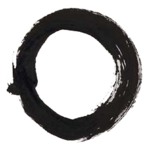
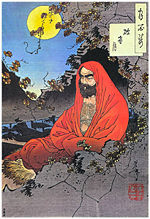
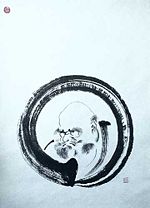
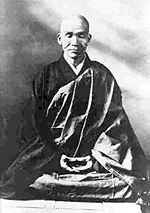


 Русский
Русский
